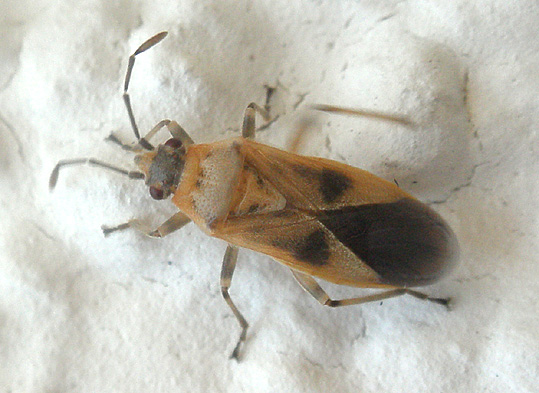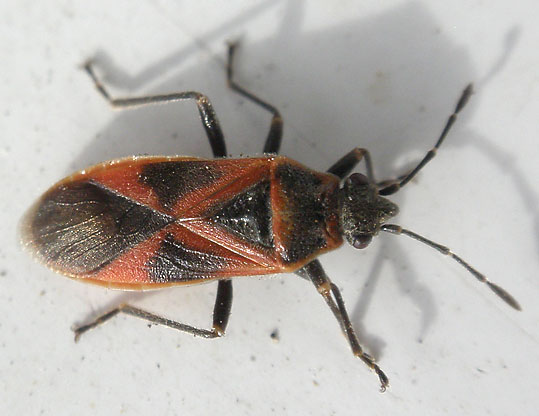
Home > Phylum selection > Arthropoda > Heteroptera > Lygaeidae
Home How to cite this site Terms & conditions Disclaimer Contact Site tutorial / Help Links |
Arocatus longiceps Platanenwanze |
 Specimen photographed in Frankfurt (Hessen) on July 16, 2010.  Specimen photographed in Frankfurt (Hessen) on October 30, 2010. Subspecies No subspecies are recognized. Original description Stal, 1872 Synonyms Arocatus longiceps Stal, 1872 Arocatus
longiceps longiceps Stal, 1872
Arocatus grassii
Picco, 1920Arocatus grassii
grassii Picco, 1920
Arocatus grassii
fuscipes Picco, 1920Arocatus longiceps
fuscipes (Picco, 1920)
Arocatus grassii
sanguineus Picco, 1920Arocatus longiceps
sanguinea (Picco, 1920)
Arocatus grassii
nigrirostris Picco, 1920Arocatus longiceps
nigrirostris (Picco, 1920)
Arocatus grassii
thoracicus Picco, 1920Arocatus longiceps
thoracica (Picco, 1920)
Identification Size: 5.5-6.6 mm. This species is extremely variable in color- no two individuals look the same. In addition, it is almost identical to its sister species Arocatus roeselii. This explains why these two Arocatus species are frequently mixed up. For example, when the species was recorded for the first time in England (e.g. BBC News 2008) it was misidentified as A. roeselii. Even in authoritative works the species are mixed up, e.g. in Wachmann et al. (2007), where in the third volume the images 36-38 are labelled as A. roeselii, but in fact show A. longiceps (see also Barndt 2008). Unfortunately, also the text in Wachmann et al. (2007) confuses the two species and states that A. roeselii also feeds on Plane trees, which is likely to be incorrect, and rather A. roeselii lives on Alder and A. longiceps lives on Plane. The two species can be separated by the shape of their head. In A. longiceps the length of the head is longer than the distance between the eyes. In A. roeselii the head is shorter than or equal the distance between the eyes. Other characters are discussed in the literature (e.g. Rabitsch 1998), but these are not useful due to the extreme variability of the species. Distribution Originally a species of eastern Europe, the Caucasus and Asia Minor, Arocatus longiceps currently invades Central Europe. It was first recorded in Austria in 1995. The first records from Germany are from 1997 and in the meantime the species has reached the British Isles in 2007. In Germany the species is recorded from the following Länder: Baden-Württemberg, Rheinland-Pfalz, Hessen, Thüringen, Sachsen, Sachsen-Anhalt, Niedersachsen, Brandenburg and Berlin. The species is currently quite common in Germany and population numbers are rising. Biology Arocatus longiceps lives on Plane trees (genus Platanus). Reports of other host plants (e.g. Acer, Tilia, Carpinus, Castanea) are dubious, because of the possible confusion with A. roeselii. The phenology is also unclear. After overwintering, imagines can be found as early as March. Confirmed first records of larvae are in early June, of next generation adults in late June and July. There might be up to two generations per year, but this is yet to be confirmed. Overwintering imagines may be found in large groups under Plane bark. Overwintering imagines can also be found inside houses (often in masses). |
| This page has
been updated on December 19, 2012 This site is online since May 31, 2005 Copyright © by Nikola-Michael Prpic. All rights reserved. |
< Previous | Next > Subspecies Original description Synonyms Identification Distribution Biology References  |